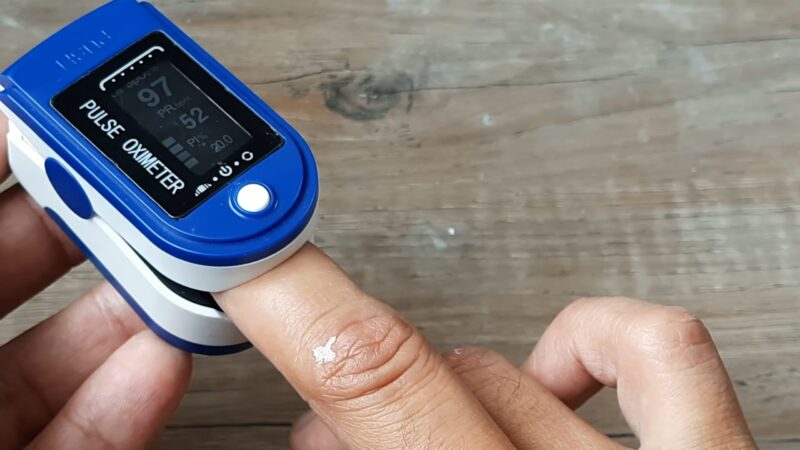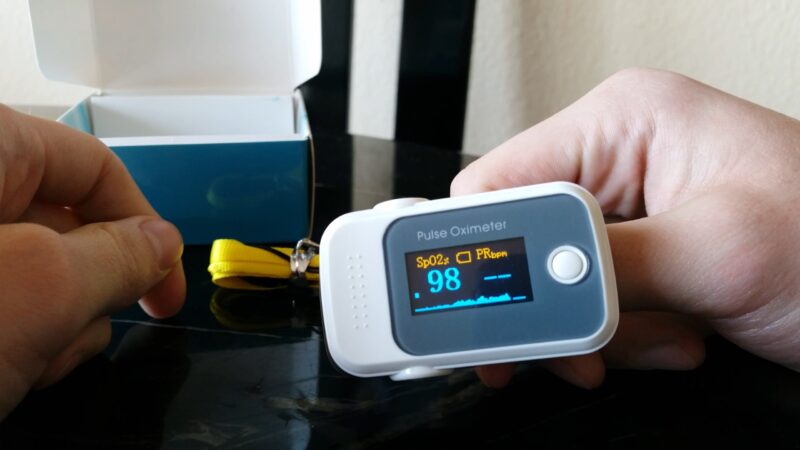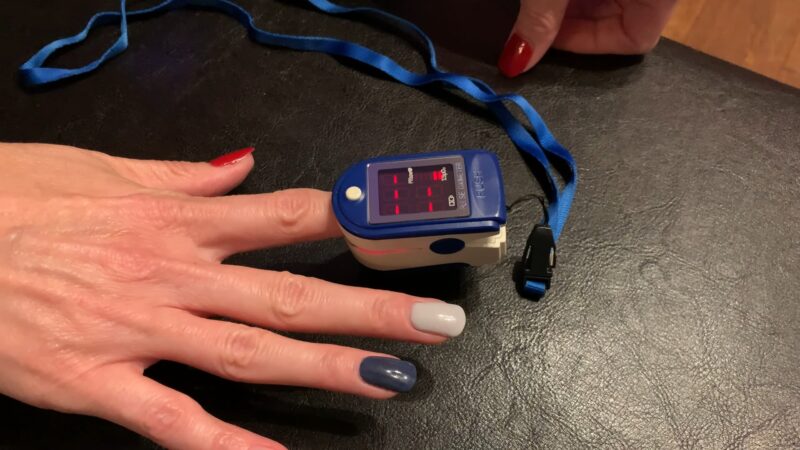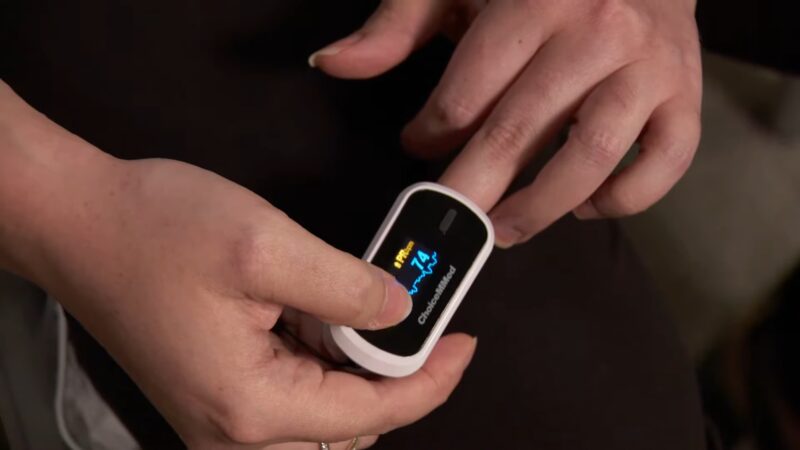Imagine you’re using a pulse oximeter, a handy device that tells you how well your body is absorbing oxygen. But here’s a question: does it matter which finger you use? You might think, “It’s just a finger, right?” Well, it turns out, that the choice of finger can make a big difference.
In this post, we’ll explore which finger is the best for getting accurate readings from a pulse oximeter.
Key Takeaways
- The middle finger of the right hand generally provides the most accurate readings in a pulse oximeter, according to research.
- The accuracy of these readings can be affected by various factors such as perfusion index, nail polish or artificial nails, skin thickness and temperature, and finger size.
- While the middle finger is optimal, other fingers like the thumb and index finger can also be used, though they may offer varying accuracy.
- Enhanced accuracy can be achieved by warming your hands, removing nail polish, staying still during measurement, and ensuring the device has sufficient battery power.
- Pulse oximeters are valuable for monitoring oxygen saturation levels and heart rate, but they should not be solely relied upon in cases of medical emergencies or specific health conditions. They are not substitutes for professional medical advice.
The Best Finger for Accurate Readings
Research suggests the middle finger of the right hand tends to provide the most accurate readings. A study in the American Journal of Respiratory and Critical Care Medicine found that this finger had the highest SpO2 readings, indicating better blood flow and oxygenation.
Why the Middle Finger?

- Better blood flow: The middle finger often has stronger and more consistent blood flow. This is crucial because consistent blood flow ensures that the readings are not only accurate but also stable over time. The vascular structure of the middle finger is generally more conducive to the type of non-invasive monitoring performed by pulse oximeters.
- Central location: It reflects systemic circulation more effectively. Being centrally located, the middle finger is better positioned to represent the oxygenation of blood throughout the body. This central position helps in minimizing the variances that might be caused by peripheral circulatory issues.
- Size and Fit: Usually fits well in the oximeter clip. This is important because a secure and proper fit ensures that the device’s sensors are appropriately aligned with the blood vessels. A good fit minimizes external light interference, which can significantly affect the accuracy of the reading.
Other Fingers

- Thumb: Offers good readings but can have varying blood flow. The thumb’s unique circulation pattern can sometimes result in less consistent readings compared to the middle finger. However, it’s often used as an alternative if the middle finger is not available or in specific clinical situations.
- Index finger: Commonly used, but may not always be the most accurate. While convenient, the index finger can sometimes provide less accurate readings due to its frequent use and exposure to varying temperatures and conditions. Its blood flow may not be as consistent as the middle finger.
- Ring and Little fingers: Less reliable due to weaker blood flow and size variations. These fingers are farther from the heart, which can lead to a lower perfusion index, affecting the accuracy of SpO2 readings. Their smaller size might also result in a less secure fit in the oximeter clip.
Exceptions and Considerations
Hand dominance

Your dominant hand might have better blood flow, affecting readings. People often find that the dominant hand has more developed musculature and vascular structure, which can influence the readings.
However, this is not a universal rule, and individual variations exist.
Medical conditions
Conditions like peripheral vascular disease can affect blood flow in the fingers. Such conditions can lead to reduced blood circulation, which significantly impacts the reliability of readings.
Patients with these conditions should consult with healthcare professionals for the most accurate monitoring method.
Environmental factors
Extremely cold environments can reduce blood flow to extremities. Reduced blood flow due to cold temperatures can lead to lower and potentially inaccurate SpO2 readings. It’s advisable to warm the hands before taking a measurement to ensure more accurate results.
Tips for Accurate Readings
Warm Your Hands!
If your hands are cold, vigorously rub them together to generate heat. This process increases blood flow, ensuring a more reliable reading. Also, soaking your hands in warm water for a few minutes can also help. Just make sure to dry them thoroughly before using the oximeter.
Avoid Direct Heat
While warming is important, avoid direct heat sources like a heater or a hairdryer, as they can cause excessive warming and affect peripheral circulation.
Remove Nail Polish

The oximeter’s light sensors can be blocked by nail polish or artificial nails, leading to skewed results. Clear, unpainted nails provide the best conditions for accurate measurements. If removing the polish isn’t an option, consider using a toe, particularly the big toe, which can provide comparable readings.
If you frequently wear nail polish, it’s wise to regularly check your SpO2 levels both with and without polish to understand how it might affect your readings.
Stay Still
When taking a reading, keep your hand and finger as still as possible. Even small movements can cause the oximeter to misread your blood oxygen level. Rest your hand on a flat surface at heart level. This position stabilizes the hand and provides a more consistent blood flow.
Maintain normal breathing while taking the measurement. Holding your breath or breathing irregularly can temporarily alter blood flow and oxygen levels, affecting the reading.
Check Battery
Regularly check the battery level of your oximeter. A low battery indicator should never be ignored as it could lead to inaccurate results. Always keep spare batteries handy, especially if you rely on the oximeter frequently or use it in a setting where immediate replacement isn’t possible.
A low battery can not only give incorrect readings but also affect the calibration of the device over time. Ensure the oximeter is functioning properly and consider professional recalibration if necessary.
FAQs
Can I use a pulse oximeter if I have Raynaud’s syndrome?
Yes, but with caution. Raynaud’s syndrome can affect blood flow to your fingers, potentially leading to inaccurate readings. In such cases, using a toe or an earlobe, if your device allows, might provide more reliable results.
Always compare these readings with how you feel and consult with your healthcare provider.
Does the thickness of the finger affect the pulse oximeter reading?
Yes, finger thickness can impact the reading. Extremely thick fingers might not fit well in the oximeter, leading to poor sensor contact and inaccurate readings. In such cases, using a different finger or a toe might be more effective.
How long should I leave the pulse oximeter on my finger for an accurate reading?
Typically, a pulse oximeter can provide a reliable reading within 10-30 seconds. However, it’s a good idea to wait until the reading stabilizes, which is indicated by consistent numbers for at least 5-10 seconds.
Can smoking affect my pulse oximeter readings?
Yes, smoking can affect the readings. Nicotine and other substances in cigarettes can cause vasoconstriction, reducing blood flow to your extremities and potentially leading to lower SpO2 readings.
Additionally, carbon monoxide from smoking can falsely elevate SpO2 readings.
Is it possible for a pulse oximeter to show a high reading even if I’m having breathing difficulties?
Yes, it’s possible. A pulse oximeter measures oxygen saturation, not airway obstruction or CO2 levels. Therefore, you can have normal SpO2 readings while experiencing breathing difficulties.
Always consider other symptoms and consult healthcare providers if you’re experiencing respiratory issues.
Can I use a pulse oximeter to monitor my fitness levels during exercise?
While a pulse oximeter can provide insight into your oxygen saturation and heart rate during exercise, it’s not specifically designed for fitness monitoring. The readings can fluctuate due to increased movement and changes in blood flow.
For fitness tracking, a device specifically designed for exercise, like a sports watch with a heart rate monitor, might be more useful.
Summary
So, which finger should you use? The middle finger of the right hand seems to be the best choice for most people. However, remember that individual differences and conditions can affect readings. When in doubt, compare readings across different fingers.
The key is to ensure consistent, accurate measurements to monitor your health effectively. Understanding the nuances of using a pulse oximeter can significantly impact its effectiveness. While it is a useful tool, it’s not a substitute for medical advice.
If you have concerns about your oxygen levels, always consult a healthcare professional.

